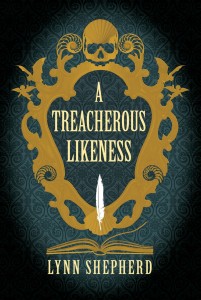 Published by Corsair 7 February 2013
Published by Corsair 7 February 2013
352pp, hardback, £17.99
Reviewed by Shirley Whiteside
When a review of a novel begins by mentioning the quality and quantity of the research undertaken it can often mean that the work in question is full of telling details but rather lacking in other aspects. Fortunately Lynn Shepherd’s second novel featuring private detective Charles Maddox, which is immaculately researched, takes bare historical facts and weaves them into a fiction that is gripping from beginning to end.
Maddox is engaged by Sir Percy Shelley, only surviving child of Mary and Percy Bysshe Shelley, to investigate a case of blackmail concerning his mother. Lady Shelley, Sir Percy’s forceful wife and ferocious protector of the Shelley legend, alleges that Mary’s step-sister, Claire Clairmont, is demanding payment for certain papers that if published will tarnish the carefully constructed image of the late poet. And so Maddox is drawn into the dark labyrinth of Shelley’s world; the illicit affairs, betrayals, desertions, mental illness and dead infants. Maddox’s beloved great-uncle and mentor is implicated in some kind of cover-up, having previously taken on a job for Shelley, but he is locked inside his own failing body and cannot help Maddox in his quest for the truth. Pages are torn from his case journals, pages that might explain what happened to Shelley’s unhappy first wife, and so Maddox must use his own powers of detection to solve the mysteries.
The convoluted relationships between the main characters can be difficult to unravel – first wives, second wives, mistresses, children, step-children – and to that end a family tree at the front of the novel is invaluable. The Shelley family does not come out of this tale untarnished but Shepherd makes a strong case for the way she fills in the gaps in the known series of events. Her solutions to the various mysteries are plausible and she has created an absorbing story of a very dysfunctional family. The speech and style of the writing is in keeping with the period which means there are no anachronisms to suddenly jolt the reader out of the period.
The only caveat is the role of the anonymous narrator who rather spoils the carefully constructed Victorian milieu. Using ‘I’, one expects another character to appear at some point and it is confusing when one does not. Also, the narrator compares events of the nineteenth century to ‘now’ but fails to make clear that he or she is referring to the reader’s present day. It is a pity because the novel would work without the presence of the narrator but one can only deduce that Shepherd felt the need for an omniscient storyteller in order painstakingly to knit fact and fiction together.
Shepherd is certainly very familiar with both Mary and Percy Bysshe Shelley’s work. The title of the novel and the chapter headings are inspired by his poems and this lends a further layer of enjoyment for readers who know his work. However the slip between known facts and conjecture is seamless and even those with little knowledge of the Romantic Poets will find this literary mystery a real page-turning treat.
